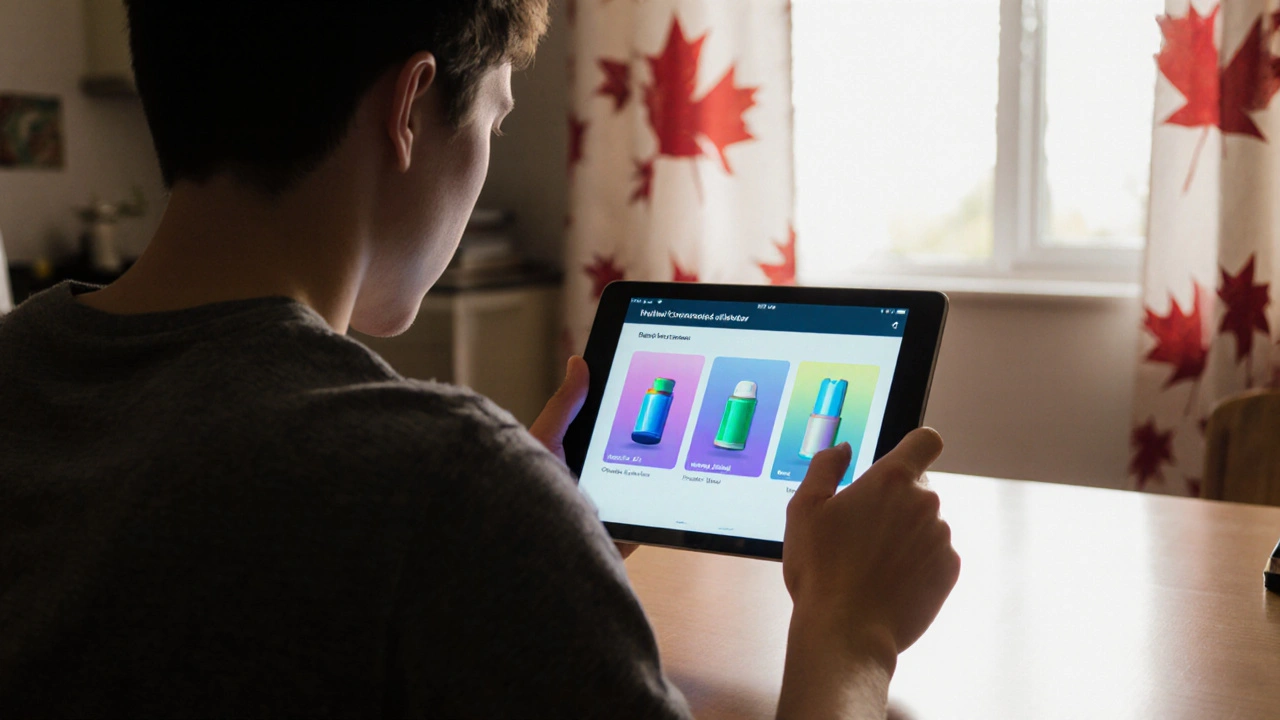Inhaled Corticosteroids: A Practical Guide
When dealing with inhaled corticosteroids, medications delivered by an inhaler that target airway inflammation. Also known as ICS, these drugs form the backbone of treatment for asthma, a chronic inflammatory disease of the airways and chronic obstructive pulmonary disease, a progressive lung condition that restricts airflow. They work by reducing swelling and mucus production, which keeps the airways open.
If you’re looking for quick relief, inhaled corticosteroids are not the answer; that’s where bronchodilator, a drug that relaxes airway muscles to widen breathing passages steps in. Short‑acting bronchodilators like albuterol, a rapid‑acting β2‑agonist for symptom relief open the tubes fast, while the corticosteroid works slower but steadier to keep them from closing again.
Key Considerations When Using Inhaled Corticosteroids
First, pick the right device. Metered‑dose inhalers (MDIs) need a spacer, whereas dry‑powder inhalers (DPIs) rely on a strong inhale. The device you choose influences how much medicine actually reaches your lungs, so mastering technique is a must. Second, timing matters. Doctors usually advise taking the steroid every morning and evening, sometimes with a bronchodilator right before to open the airway and improve drug delivery.
Third, watch for side effects. The most common is a hoarse voice or sore throat, which you can reduce by rinsing your mouth after each puff. Rarely, high doses can affect bone density or blood sugar, especially in older adults. Knowing these risks helps you decide with your doctor whether a low‑dose inhaled steroid or an alternative is best.
Fourth, understand the dosing spectrum. Low‑dose inhaled corticosteroids are enough for mild intermittent asthma, while moderate to high doses are reserved for persistent symptoms or severe COPD. The dosage is measured in micrograms per actuation, and the total daily amount guides the step‑up or step‑down approach in guidelines.
Fifth, combine wisely. Many patients use a single inhaler that mixes a corticosteroid with a long‑acting bronchodilator (LABA). This combo offers twice‑daily control and reduces the number of devices you carry. However, it’s important to never use a LABA alone for asthma—guidelines require an inhaled steroid component to prevent worsening attacks.
Sixth, consider adherence tools. Smartphone reminders, dose‑counter inhalers, or even a simple pillbox‑style holder can keep you on track. Studies show that people who use adherence aids experience fewer emergency visits and better lung function.
Seventh, know when to step up. If you need your rescue inhaler more than twice a week, or experience night‑time wheezing, it’s a sign your current steroid dose isn’t enough. Your provider may increase the dose or add another controller medication.
Eighth, don’t forget vaccinations. Since inhaled corticosteroids can slightly dampen local immunity, flu and pneumonia shots become even more important for people with asthma or COPD.
Finally, keep the conversation open with your healthcare team. New inhaler technologies, such as smart inhalers that record usage data, are emerging and may soon become part of routine care. Knowing what’s available helps you make informed choices.
All these points weave together: inhaled corticosteroids reduce inflammation, bronchodilators open the airway, proper devices ensure delivery, and monitoring keeps you safe. Below you’ll find a curated list of articles that dive deeper into each of these topics, from dosing guides to side‑effect management, so you can fine‑tune your breathing plan with confidence.
Beclomethasone Dipropionate vs Other Inhaled Corticosteroids: A Detailed Comparison
by philip onyeaka Oct 4 2025 10 MedicationsA side‑by‑side look at beclomethasone dipropionate versus fluticasone, budesonide, mometasone, and ciclesonide, covering potency, dosing, cost, and safety.
READ MORE
